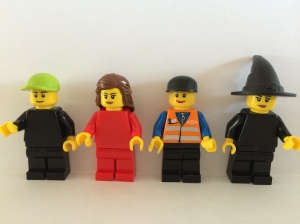One of the most difficult things for a student who experiences meltdowns, is predicting when things are getting too stressful before they get to a point of no return. If they can learn to recognise the feelings of anxiety building, then they can learn how to remove themselves from a situation at the right point and therefore how to keep both themselves and others safe.
There are many ways we work with our students to help them to understand how they are feeling, but one of the easiest ways is by using the 5 point scale. The five point scale is exactly what its name says it is; a list of the numbers one to five, colour coded for easy recognition.
We use miniature ones taped with Velcro to student’s workstations, but it’s equally possible for students to carry them in their pockets. Miniature moveable arrows can be therefore moved by the student to show those around them how they are feeling. When a student is calm and able to continue, the arrow is at number one. When a student is able to continue, but may need extra reassurance, the arrow is at number two. If a student is becoming vey nervous and needs help the arrow is at number three.
In our class it’s this, the number three which is the most important. Number three is the point at which it’s possible to help a student to make a good choice; the point at which a student needs a break or some time out. For some that means a chance to talk about their worries, for others it means some alone time. Either way, it’s the right time for a student to ask for help and for a teacher to offer it.
By the time the arrow moves to number four and number five it’s often difficult for a student to think clearly and make the choices they would earlier down the scale. It’s therefore much harder at this point to keep them safe. Which is why point three of the scale is where we need to help students and get them to understand that they need help.
So, how can you do this easily in mainstream? Why not print off the mini five point scales and laminate them for on students’ tables? Encourage all your students to use them, not just those with autism. It will allow you to quickly assess who needs help now, (those on three or above) and those who are likely to need your help soon (those on a two), whilst meaning that students can carry on working rather than sitting with their hand up waiting for you to arrive. Go on, give it a go. What have you got to lose?
For much more detailed information and miniature 5 point scales check out this fantastic website: www.5pointscale.com
